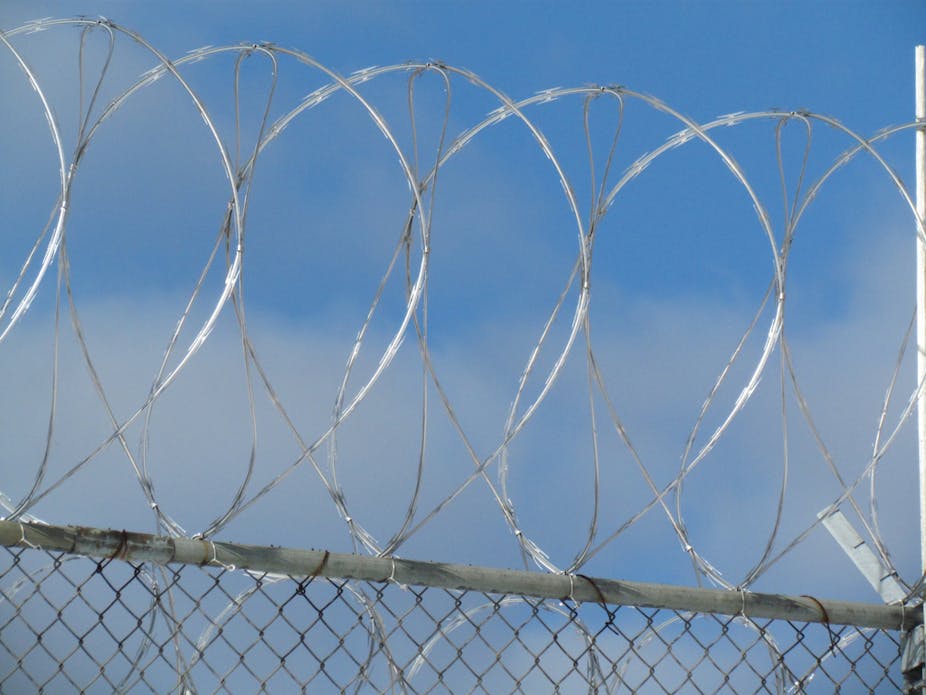The recent final report of Economic Regulation Authority (ERA) into the efficiency and performance of Western Australian prisons confirms ongoing concerns about transparency in the prison sector, with a legal wall still protecting private prisons from operational scrutiny.
The ERA’s proposed reforms are intended to make custodial services more accountable, more transparent and more comparable.
For public prisons this would involve the introduction of benchmarking, service level agreements, annual reviews and improvements in external reporting. For private prisons this would involve new reporting requirements around a set of sector level benchmarks, but beyond this, there is little that will change.
The recommendations appear to reflect the widely held view that Western Australia’s private prisons are already more transparent than their public sector counterparts. As a consequence, many of the recommendations are designed to bring the public sector into line with the expectations already imposed on the private sector.
In the words of the ERA:
Private prisons are performing to high standards because they are held to clear and robust standards of accountability and transparency.
However, a legal wall protects private prisons from operational scrutiny. The operating costs and internal efficiencies within the WA’s private prisons remain off limits to the public. This includes information about the way private providers spend taxpayer money.
If the proposed reforms are implemented, and participation of private providers increases, this opaqueness around the provision of custodial services may actually intensify. This presents a serious impediment to the public accountability aspirations of the ERA’s final report.
Not only could this information support a proper comparison between prisons, it may also help the public sector understand and learn from the operations of their private sector counterparts.
Unfortunately, commercial-in-confidence remains a standard practice in Australia and it means that private operators are able to avoid disclosing the amount of profit they make from government contracts. Some might suggest that this is unimportant, and that savings to the taxpayer are the only relevant concern. However, when it comes to prisons, cost savings can have fairly serious consequences.
Both here in Australia and overseas, efforts by private contractors to reduce staff numbers and associated costs has led to a number of scandals. For instance, it has been reported that in an attempt to cut costs by foreign giant Serco reduced staff training, leaving prison officers at risk of assault and injury at Mt Eden, in New Zealand.
At home, it has been claimed that similar reductions in staffing levels at Victoria’s Fulham prison by another foreign conglomerate, GEO, led to riots as scant officer numbers were unable to control inmates. There are obvious problems with a loss of control in any prison, but in these cases the public has no means to interrogate the consequences of private providers resource allocation.
Commercial-in-confidence agreements not only benefit private operators they can also protect state governments from detailed public scrutiny. In NSW at least, this lack of scrutiny has meant that the payment of performance linked fees has been profoundly confusing and inconsistent.
For instance, GEO was still awarded their performance bonus despite failing to meet performance targets for NSW’s Junee Prison in 2006. The justification given by Commissioner Ron Woodham was that performance linked fees were designed to encourage performance rather than be “punitive”.
This contrasts with the decision to reduce Parklea’s (NSW) performance linked fee in 2011 due to poor performance.
Similarly, in Victoria, commercial-in-confidence agreements have meant that the public has no idea whether their taxes have been used to pay a performance linked fee in any given year. Indeed, it is possible that private operators may have received these fees despite significant mismanagement, like the riots at Fulham Prison.
The ability of the public to hold both public and private operators accountable requires that there is enough information in the public domain to enable the public to scrutinise and interrogate their operations. To do that meaningfully, neither provider should be able to function behind a veil.
That being said, if we were to agree that there are issues of security or commerce that warrant privacy, then this privacy shouldn’t function to privilege the protection of private sector interests.
At the end of the day, privately-run prisons are still funded by the taxpayer. Knowing how these operators spend public money is in the public interest. If we are serious about prison transparency, private operators need to tell us more about how they execute their dual goals of profit maximisation and public service delivery.
Associate Professor Jane Andrew, Dr Max Baker, and Dr Philip Roberts, from the University of Sydney Business School are currently collaborating on a nationwide study of prison privatisation.

